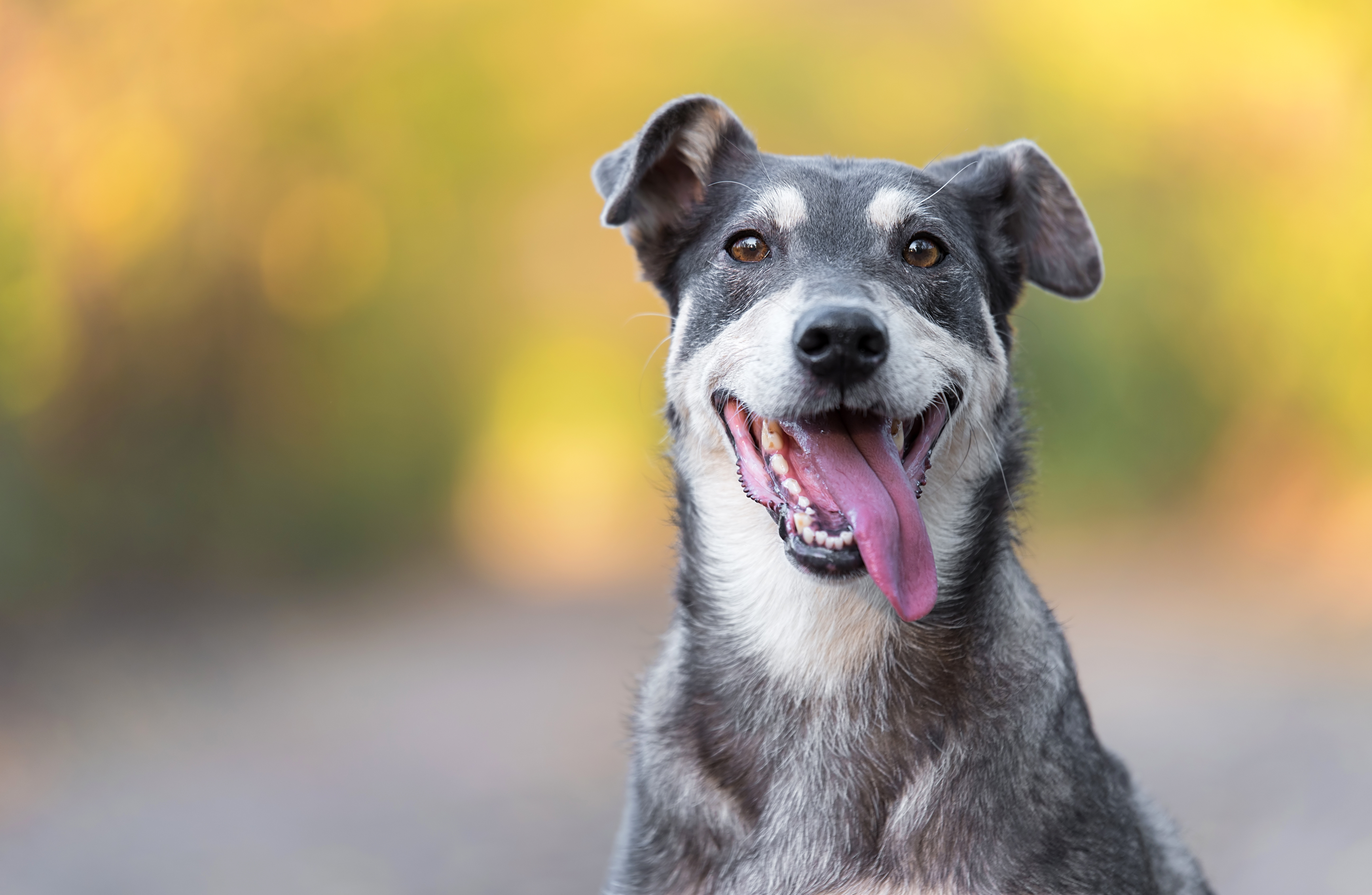Key Takeaways
- Dental problems can lead to systemic health issues.
- Dogs should have a daily teeth-brushing routine.
- Diet, dental cleanings, and dental chews can help improve dog oral health

Dental diseases hurt a whopping 80% of dogs over the age of three. Good dental hygiene prevents dental disease in dogs, but it can be tricky to figure out how to perform and afford dental care for dogs. Dental cleanings, extractions, and chews – how do dog owners know which services are necessary? What everyday routines can improve the oral health of a dog?
Let’s dive right into dental issues in dogs, essential dental care, and tips for budgeting for dental expenses.

Understanding Canine Dental Health
A dog’s oral health plays an important role in their overall well-being. Good dental hygiene is associated with lower risks of heart disease, gum infections, and tooth loss. To ensure your dog has adequate dental health, brushing teeth at least thrice a week is recommended.
Dog dental diseases
Periodontal disease: Canine periodontitis can cause gum and teeth problems. Periodontal disease is not reversible, which means that treatment serves to mitigate the negative symptoms of periodontal disease instead of curing it. Periodontitis can lead to severe pain and increase your dog’s chances of sustaining organ damage and heart disease.
Plaque buildup: Not brushing teeth enough can quickly lead to plaque buildup. Effective plaque removal will require professional dental cleansing. If plaque isn’t dealt with for a long time, it can lead to inflammation and pain.
Tooth decay: Dog tooth decay can cause bleeding, poor appetite, drooling, and bad breath. Rotting teeth need to be treated through repairs, root canals, or extraction depending on the severity of the decay.
Long-term impact of poor dental health
A dog will feel the effects of poor oral health. Infections, bad breath, bleeding gums, and toothaches can be extremely painful. If periodontal disease worsens, it can open your dog up to more serious issues and exacerbate other health conditions.
A dog with poor dental hygiene habits over time becomes more likely to get heart disease and other medical conditions.
Indications of dental problems in dogs
- Bad breath
- Swollen or bleeding gums
- Difficulty chewing
- Dropping food when eating
- Pawing at mouth
- Toothaches
Preventive Dental Care Practices for Dogs
Proper teeth brushing techniques and suitable dental products for dogs
Brushing a dog’s teeth twice a day is best, but not all dogs are so cooperative. Dogs should get their teeth brushed at least three times a week, and receive professional cleanings at least annually.
Use dog-friendly dental products such as dog toothbrushes, toothpaste, and dental chews. Consider using toothbrushes that have angled handles and multiple heads, or choose a finger toothbrush designed for brushing a dog’s teeth.
When brushing a dog’s teeth, make sure to:
- Be gentle
- Brush slowly
- Gradually establish the routine
- Use pet toothpaste (comes in various flavors appetizing to dogs)
- Avoid using human toothpaste (it can make dogs ill!)
- Wear gloves and wash hands after you’re done
- Rinse toothbrush after tooth brushing session
- Replace the toothbrush every three months
If your dog can’t tolerate having the tips or insides of their teeth brushed, don’t worry. This is usually fine since periodontal issues harm the outer surfaces of teeth, which you should ensure are cleaned.
In general, it is best to introduce consistent daily dental care to a dog when they are still a puppy. That way, they will become accustomed to the routine. Older dogs will take longer to train when it comes to establishing a proper tooth-brushing routine, but the benefits are well worth it.
Dental-friendly diet choices and treats to promote oral hygiene
Dog food and dietary choices can influence a dog’s overall oral health. Follow your vet’s advice regarding what type of diet will suit your dog’s needs best, including what changes can benefit oral health.
In general, dogs can improve their dental health by eating animal bones, fruits and veggies, and molded dental chews.
Utilization of dental toys and chews for maintaining dental health
Dental chews are effective treats that are specially designed to clean a dog’s teeth and prevent tartar buildup. These encourage dogs to chew in a certain way that is enjoyable and beneficial to their health.
A dental toy can also help your dog reduce plaque and tartar buildup without brushing. While brushing often is still important, dental toys can serve as a great complement to daily brushing.
Professional Dental Care for Dogs
Regular veterinary dental exams and cleanings
At the start of a dental cleaning visit, veterinarians will perform pre-anesthetic testing. This includes blood work and potentially other screenings to ensure the process will be safe for your dog.
Next, you can expect the vet to start by placing your dog under general anesthesia. With your go-ahead, the veterinary team may then begin performing a thorough dental examination, followed by any necessary procedures.
Veterinary dental cleanings involve using hand and ultrasonic scalers. Tooth scaling removes plaque and tartar buildup, even in places that are difficult to reach.
During and after the dental cleaning, your dog may receive pain medication. Ensure that your dog follows any kibble restrictions that the vet imposes after a dental procedure.
Importance of dental X-rays and diagnostics
Early detection of dental issues can greatly increase the ability to resolve these issues or prevent them from worsening. Vets will typically obtain between 8 and 15 X-rays to discover any issues in your dog’s teeth that can’t be seen otherwise. An X-ray image can reveal dental problems such as:
- Tooth abscess
- Broken tooth
- Periodontal disease
- Unerupted and impacted teeth
- Extra root
By uncovering dental issues and risks earlier, your dog can receive timely treatment. This may involve surgery, medications, dental procedures, and dietary changes.
Treatment options for canine dental problems
The worse your dog’s dental condition, the more expensive and risky it can be to treat. Here are common dental treatment options and veterinary services that dog owners encounter.
Tooth cleaning: A professional dental cleaning ensures that plaque and tartar will be removed. Vets often focus on the tartar hidden beneath the gum line.
Extraction: If periodontal disease is severely affecting your dog’s oral health, affected teeth may need to be extracted. A rotting tooth that is not extracted can further worsen your dog’s health, posing a serious health risk.
Periodontal treatment: Both surgical and non-surgical procedures may be recommended by your vet if your dog has periodontitis. Treatment typically begins with root planning, polishing, and dental scaling.
Special dental applications: Fluoride, cleaning compounds, and antibiotics may be used by vets to strengthen enamel, decrease tooth sensitivity, and provide better dental care to your dog.
New diet: If your dog has teeth and gum issues, your vet might recommend that your dog switches to a new diet. This may include more fruits and veggies, raw animal bones, molded dental chews for dogs, and dry dog food.

Sourcing Pet Insurance for Dental Care
Pet insurance helps dog owners pay for a wide variety of veterinary expenses. If your furry friend gets into an accident, the medical expenses can prove a huge financial burden. Insurance serves to reduce the costs you need to pay so that you can obtain the medical attention your dog needs.
If you have preventive care coverage, you can receive insurance payouts on routine dental cleanings for your dog. Dental disease is no joke – it can lower a dog’s overall lifespan and quality of life, exacerbating other health conditions. Professional dental cleanings help keep your dog’s gum and teeth in tip-top shape, while also letting the vet discover any new issues.
Accident-only pet insurance: Only covers accident-related expenses, such as emergency treatment, diagnostic exams, and urgent care for your dog. Since emergency medical care for dogs can cost thousands of dollars, pet insurance can be a great form of financial protection when your dog needs medical treatment the most.
Accident and illness pet insurance: Also known as comprehensive coverage. Covers both accident- and illness-related expenses, including diagnostic tests, treatment, and medications. Commonly covered claims include treatment costs for cancer, arthritis, diabetes, and hip dysplasia.
Wellness plan: Also known as preventive care coverage, wellness plans are sold as an add-on. They cover expenses such as vaccinations, dental cleanings, routine health exams, and spay/neuter.
Advantages of pet insurance in managing dental expenses for dogs
Emergency coverage for dental problems: Comprehensive pet insurance usually covers urgent dental needs, such as your dog breaking a tooth in an accident. Note that urgent pet care coverage does not extend to routine dental care.
Affordable routine dental cleanings: A wellness plan provides valuable preventive care by reimbursing dental cleaning expenses.
Peace of mind: When pet owners don’t need to worry about affording canine dental care, it’s easier to make decisions based on the dog’s medical needs and necessities.
How to find reputable pet insurance providers and compare policies
Searching for good pet insurance can be hard and time-consuming if you don’t know where to begin. Here are some of the top pet insurance providers to consider.
- Pumpkin: Offers excellent coverage with multi-pet discounts.
- ASPCA: The plans come with good wellness plan options for dental care.
- Lemonade: Coverage starts at an affordable $10 a month.
- Embrace: Get up to 90% back on veterinary bills.
When looking for pet insurance for your dog, compare the following key elements between pet insurance providers and policies.
Insurance premium: Dog owners usually pay around $50 a month for comprehensive pet insurance. If you only want accident coverage, prices can be as low as $10 a month. Choose an insurance premium that aligns with your budget and needs, but pet owners should obtain comprehensive insurance if they can.
Deductible: You need to reach the deductible in out-of-pocket expenses before you can obtain an insurance payout. Most pet owners choose a deductible of around $250, but pet insurance deductibles can vary between $0 and $1000.
Coverage limits: Once the coverage limit has been reached, the pet insurance carrier will no longer provide financial assistance. Dog owners usually choose maximum pet insurance limits of around $2,500. If you feel more comfortable with a higher coverage limit, you can also obtain coverage with higher limits or unlimited coverage.
Add-ons: Many pet owners can benefit from a wellness plan add-on that covers routine expenses. If you’re worried about your dog’s dental health, a wellness plan with dental care coverage is a great choice.
Restrictions and waiting periods: Insurance usually takes a week or longer to activate. Pre-existing conditions are also not covered by most pet insurance policies, which means it’s usually better to obtain pet insurance early in your dog’s life. That way any health issues can be covered by policies.

Importance of Budgeting for Dental Expenses
Cost considerations for routine dental care
Treating dental issues in dogs can be time-consuming and expensive. Here are estimated dental expenses that dog owners might need to pay throughout a dog’s life.
- Dental cleaning: $170 to $350
- High-end veterinary dentist cleaning: $4,000
- Blood work: $150 per visit
- Anesthesia: $90 to $1,200
- Tooth extraction: $500 to $800 per extraction
- X-rays and electrocardiograms: ~$200 per image, ~$2000 per set of X-rays
Dental and veterinary expenses can vary greatly depending on your dog’s overall health condition, dental needs, and reactions to the treatment. The earlier you catch a dental problem or risk, the easier it becomes to treat or prevent it from worsening. This can also reduce the overall cost of treatment.
Summary
Dental issues like periodontal disease and tooth decay can lead to systemic health problems and pain. It’s always good to take proactive measures to maintain your dog’s good health. Optimal dental care for dogs may include:
- Daily brushing
- Annual professional cleaning sessions
- Preventive care pet insurance to reduce routine dental expenses
- Vet visits to ensure early detection of health issues




























